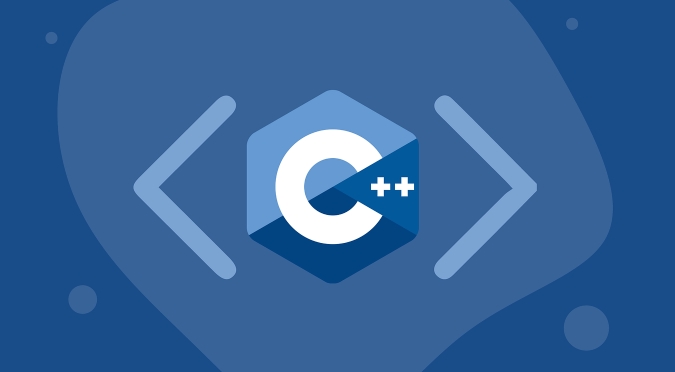SFINAE (Replacement failure is not an error) is used to exclude mismatched types when instantiating templates. The core is that when type replacement fails, the compiler does not report an error but ignores the template. For example, when accessing T::value_type does not exist, only the template is excluded. The uses include function overload selection and feature detection, such as determining whether there is a size() method. The implementation technique is to use std::enable_if to limit template parameters, and encapsulation type features improve readability. Concepts introduced by C 20 provides a clearer alternative, but SFINAE is still indispensable in older versions.

SFINAE is an important concept in C template programming, and its full name is Substitution Failure Is Not An Error . Simply put, during the template instantiation process, if a certain type replacement fails, the compiler will not directly report an error, but will quietly exclude the template from the candidate list.

This is very useful when writing generic code, especially when doing type judgment, overload selection or feature detection.

What is "replacement failure"?
Let's first look at a common example:
template <typename T> typename T::value_type get_value(const T& container);
Here we are trying to access T::value_type . If the incoming T is std::vector<int> , no problem; but if the incoming is int , there will be a "replacement failure" - because int::value_type does not exist.

In this case, according to the SFINAE rules, the compiler will not report an error, but just exclude this template.
What is SFINAE's practical use?
The most common use of SFINAE is to make conditional judgments in function overloading or template specialization. For example, we can decide which version of the function to call based on whether the type has a member function.
For example, to determine whether there is a method called size() to determine whether the type is:
template <typename T>
auto has_size_method(T* ptr, ...) -> std::false_type;
template <typename T>
auto has_size_method(T* ptr, int) -> decltype(ptr->size(), std::true_type{}); Two function templates are used here. The second template uses decltype and the expression ptr->size() . If this expression is legal, the match will be successful; otherwise, the replacement will fail, and the first version will be selected second.
This technique is widely used in standard libraries and modern C code to implement metaprogramming tools such as enable_if and is_detected .
How to write clearer SFINAE code?
Priority to use
std::enable_if: This is an auxiliary tool provided by the standard library, which allows you to add conditions to template parameters.template <typename T, typename std::enable_if<std::is_integral<T>::value, int>::type = 0> void foo(T x); // Only accept integer typesAvoid overly complex expressions : Too long SFINAE conditions can make the code difficult to maintain. It can be encapsulated into type traits to multiplex and simplify logic.
Pay attention to priority and readability : When multiple SFINAE conditions are superimposed, ensure that the order is reasonable and the logic is clear.
SFINAE limitations and alternatives
Although SFINAE is very powerful, it is easy to write and complicated to debug. C 20 introduces Concepts , a clearer, more semantic way to limit template parameters.
For example, use Concepts to implement the above example:
template <typename T>
concept HasSizeMethod = requires(T t) {
t.size();
};
template <HasSizeMethod T>
void bar(const T& container);This method is more intuitive and easier to understand than traditional SFINAE.
However, SFINAE is still an indispensable tool in projects like C 17 or earlier.
Basically that's it. Mastering SFINAE can help you write more flexible and general template code, but don't overuse it, keeping it clear is the key.
The above is the detailed content of What is SFINAE in C ?. For more information, please follow other related articles on the PHP Chinese website!

Hot AI Tools

Undress AI Tool
Undress images for free

Undresser.AI Undress
AI-powered app for creating realistic nude photos

AI Clothes Remover
Online AI tool for removing clothes from photos.

Clothoff.io
AI clothes remover

Video Face Swap
Swap faces in any video effortlessly with our completely free AI face swap tool!

Hot Article

Hot Tools

Notepad++7.3.1
Easy-to-use and free code editor

SublimeText3 Chinese version
Chinese version, very easy to use

Zend Studio 13.0.1
Powerful PHP integrated development environment

Dreamweaver CS6
Visual web development tools

SublimeText3 Mac version
God-level code editing software (SublimeText3)
 How to develop AI-based text summary with PHP Quick Refining Technology
Jul 25, 2025 pm 05:57 PM
How to develop AI-based text summary with PHP Quick Refining Technology
Jul 25, 2025 pm 05:57 PM
The core of PHP's development of AI text summary is to call external AI service APIs (such as OpenAI, HuggingFace) as a coordinator to realize text preprocessing, API requests, response analysis and result display; 2. The limitation is that the computing performance is weak and the AI ecosystem is weak. The response strategy is to leverage APIs, service decoupling and asynchronous processing; 3. Model selection needs to weigh summary quality, cost, delay, concurrency, data privacy, and abstract models such as GPT or BART/T5 are recommended; 4. Performance optimization includes cache, asynchronous queues, batch processing and nearby area selection. Error processing needs to cover current limit retry, network timeout, key security, input verification and logging to ensure the stable and efficient operation of the system.
 C bit manipulation example
Jul 25, 2025 am 02:33 AM
C bit manipulation example
Jul 25, 2025 am 02:33 AM
Bit operation can efficiently implement the underlying operation of integers, 1. Check whether the i-th bit is 1: Use n&(1
 C function example
Jul 27, 2025 am 01:21 AM
C function example
Jul 27, 2025 am 01:21 AM
Functions are the basic unit of organizing code in C, used to realize code reuse and modularization; 1. Functions are created through declarations and definitions, such as intadd(inta,intb) returns the sum of the two numbers; 2. Pass parameters when calling the function, and return the result of the corresponding type after the function is executed; 3. The function without return value uses void as the return type, such as voidgreet(stringname) for outputting greeting information; 4. Using functions can improve code readability, avoid duplication and facilitate maintenance, which is the basic concept of C programming.
 C decltype example
Jul 27, 2025 am 01:32 AM
C decltype example
Jul 27, 2025 am 01:32 AM
decltype is a keyword used by C 11 to deduce expression types at compile time. The derivation results are accurate and do not perform type conversion. 1. decltype(expression) only analyzes types and does not calculate expressions; 2. Deduce the variable name decltype(x) as a declaration type, while decltype((x)) is deduced as x due to lvalue expression; 3. It is often used in templates to deduce the return value through tail-set return type auto-> decltype(t u); 4. Complex type declarations can be simplified in combination with auto, such as decltype(vec.begin())it=vec.begin(); 5. Avoid hard-coded classes in templates
 C fold expressions example
Jul 28, 2025 am 02:37 AM
C fold expressions example
Jul 28, 2025 am 02:37 AM
C folderexpressions is a feature introduced by C 17 to simplify recursive operations in variadic parameter templates. 1. Left fold (args...) sum from left to right, such as sum(1,2,3,4,5) returns 15; 2. Logical and (args&&...) determine whether all parameters are true, and empty packets return true; 3. Use (std::cout
 C range-based for loop tutorial
Jul 27, 2025 am 12:49 AM
C range-based for loop tutorial
Jul 27, 2025 am 12:49 AM
C's range-basedfor loop improves code readability and reduces errors by simplifying syntax. Its basic structure is for(declaration:range), which is suitable for arrays and STL containers, such as traversing intarr[] or std::vectorvec. Using references (such as conststd::string&name) can avoid copy overhead and can modify element content. Notes include: 1. Do not modify the container structure in the loop; 2. Ensure that the range is effective and avoid the use of freed memory; 3. There is no built-in index and requires manual maintenance of the counter. Mastering these key points allows you to use this feature efficiently and safely.
 C binary search tree example
Jul 28, 2025 am 02:26 AM
C binary search tree example
Jul 28, 2025 am 02:26 AM
ABinarySearchTree(BST)isabinarytreewheretheleftsubtreecontainsonlynodeswithvalueslessthanthenode’svalue,therightsubtreecontainsonlynodeswithvaluesgreaterthanthenode’svalue,andbothsubtreesmustalsobeBSTs;1.TheC implementationincludesaTreeNodestructure
 C call python script from C example
Jul 26, 2025 am 07:00 AM
C call python script from C example
Jul 26, 2025 am 07:00 AM
Calling Python scripts in C requires implementation through PythonCAPI. First, initialize the interpreter, then import the module and call the function, and finally clean up the resources; the specific steps are: 1. Initialize the Python interpreter with Py_Initialize(); 2. Load the Python script module with PyImport_Import(); 3. Obtain the objective function through PyObject_GetAttrString(); 4. Use PyObject_CallObject() to pass parameters to call the function; 5. Call Py_DECREF() and Py_Finalize() to release the resource and close the interpreter; in the example, hello is successfully called






